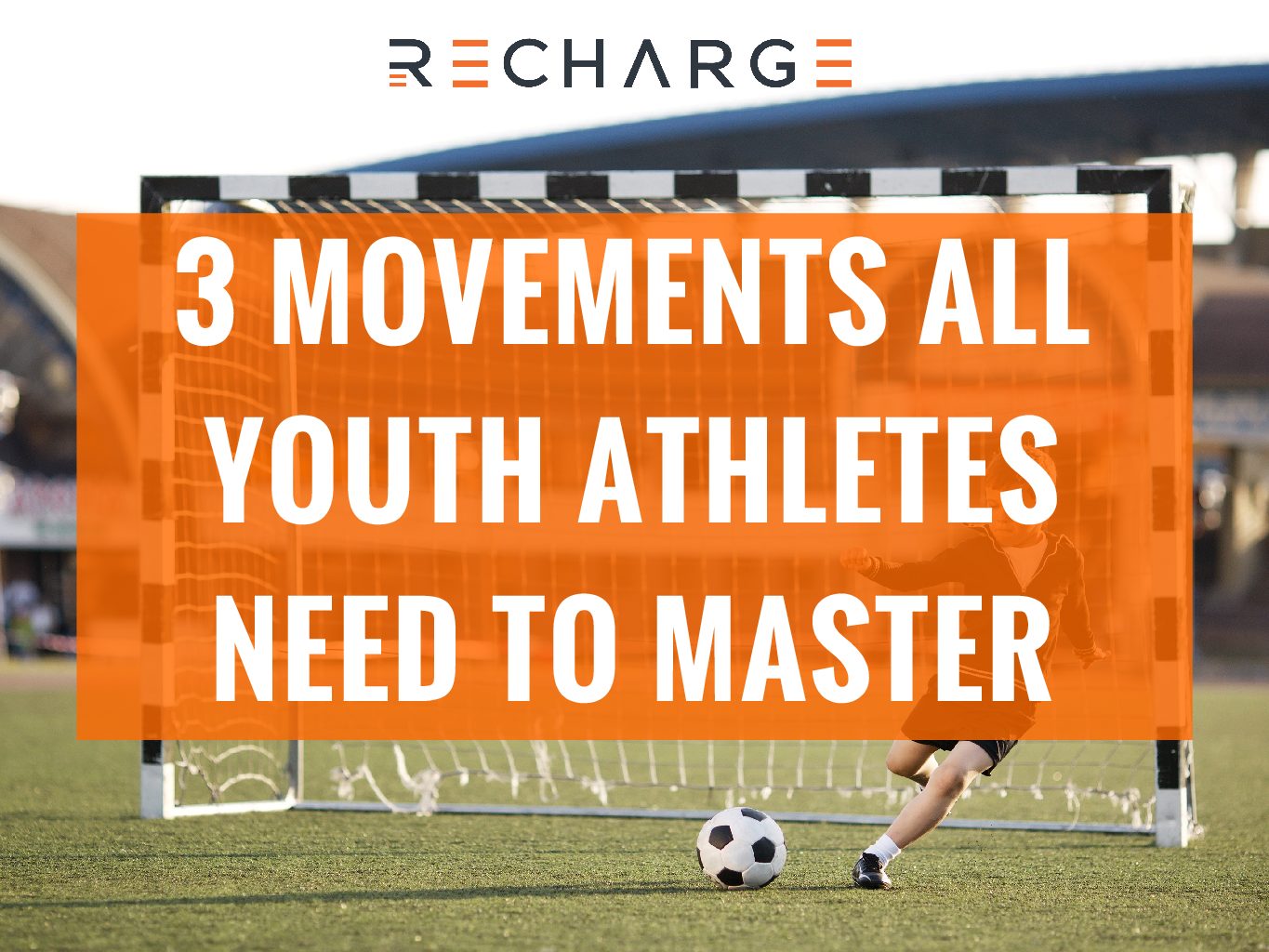[x_custom_headline type=”left” level=”h1″ looks_like=”h2″]Youth athletes need to be instilled foundational movement proficiency. [/x_custom_headline]
Introduction:
Youth athletes have a lot on their plates now a days. From year round practice, to club teams, to the school teams, to summer camps; their sports can feel like full time job. You can hear all our thoughts on youth sports in our mythbusting episode.
Often lost amongst the noise and busy schedules is the development of movement itself as a skill. Most times, simply allowing youth athletes to have down time to play will help develop a host of fundamental movement skills.
Unfortunately, that idea of play is lost amongst the structure of organized sports. With all that in mind, there are fundamental movement patterns that we recommend need be developed with youth athletes. This is not only for transference between all sports, but for overall movement literacy that they can retain throughout their entire life.
Below we have the four movements all youth athletes need to develop:
Double Leg Jumping and Landing
Whether it be in a technical way or a creative way that is within the structure of a game, jumping and landing are essential. These two actions hit on two key components of movement. Creating force. Absorbing force. The jump involves creating force through the ground and then absorbing that force while landing. With many athletes this can be taught with efficient mechanics for the jump or in a much more subtle way. Using the cue “land as quiet as possible” can be enough to have them learn how to create just enough force and absorb it accordingly. Athletes will notice this can be quite the challenge as the height or distance increases.
[x_video_embed type=”4:3″ no_container=”true”][/x_video_embed][x_video_embed type=”4:3″ no_container=”true”][/x_video_embed]
Hip Hinge
The hip hinge is a movement pattern critical for power development and learning to pick heavy things up and putting them back down. It teaches athletes how to get into a more of a ready position and generate force from that position. As simple as it seems, it is incorporated into almost every major movement that is not a squat and therefore, critical to develop. Additionally, the hip hinge helps athletes develop a sense of balance and stability through maintaining a neutral spine. This idea of neutral gives them a “home base” for efficient movement to develop from.
[x_video_embed type=”4:3″ no_container=”true”][/x_video_embed][x_video_embed type=”4:3″ no_container=”true”][/x_video_embed]
Single Leg Hops
One of the most talked about injuries in youth athletes is the ACL tear. This occurs in a single leg motion most frequently. Incorporating single leg hops, skips, and jumps can allow youth athletes to gradually build up that strength, skill, and coordination over time. The idea of developing a sense of balance pertains the singe leg hops as well. Becoming comfortable with the balance, strength, and strategy that is demanded out of single leg movements is paramount. Confidence plays an integral role in strength and comfortability with a movement can be a great way to develop that in young athletes.
[x_video_embed type=”4:3″ no_container=”true”][/x_video_embed][x_video_embed type=”4:3″ no_container=”true”][/x_video_embed]
Summary:
These three movement patterns are the foundational basis for many exercises and other more complex movements. Yes, there are other important movements, which we address in our youth strength training class and will highlight in future articles. In the end, we need to focus on helping youth athletes develop movement skills. Have them develop a movement literacy. Show them how movement can be used for the rest of their lives. Let them play. Do those and not only will you develop amazing athletes, you’ll develop amazingly resilient people.
RECHARGE: Modern Health and Fitness
Email: hey@rechargexfit.com



